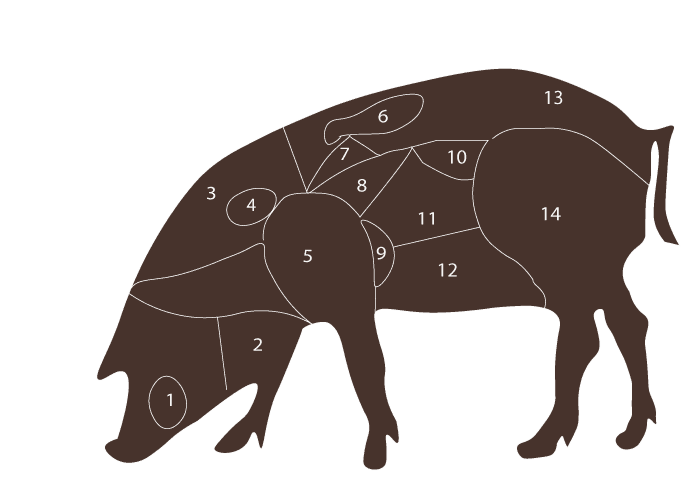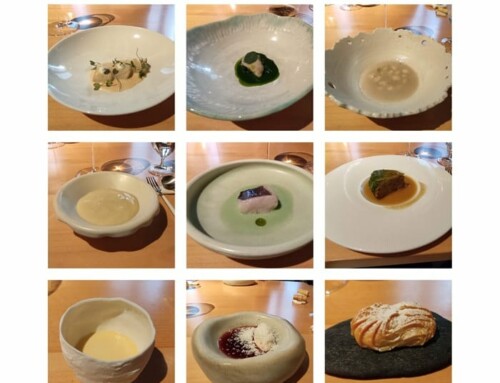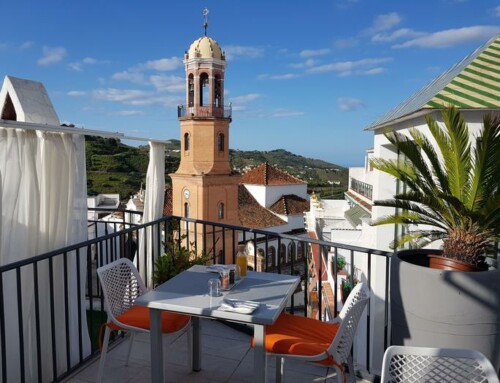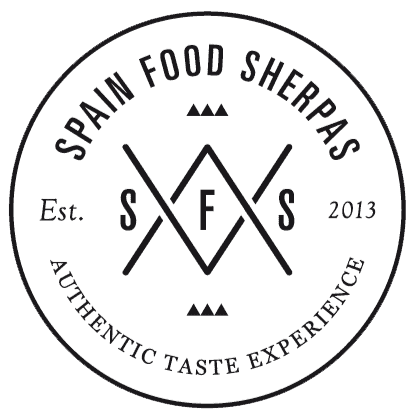Among the noblest animals that find their way to the world’s most refined menus, you’ll find the Spanish Iberian pig. This traditional breed goes back for centuries, and it’s prized for its healthy appetite; these beauties love to eat!
What you get is a chubby animal with the most astounding intramuscular fat, or marbling, which becomes some of the most expensive hams and cuts of pork in the world. Of course, in the hands of authentic artisans.
Only a skilled butcher can cut down a premium Iberico carcass into over a dozen delectable cuts, but it’s up to us to know about them and choose them for distinct recipes. Here’s all you need to know about the Iberian pig and its most famous cuts of meat. From cheeks to tail.
- Carrillera (Cheeks)
Called carrilleras or carrilladas — they’re the pig’s cheek muscle and cooked right; it’s delicious!
As you might imagine, Iberico pigs use this muscle a lot, especially when they’re treated with the famous acorn diet. The muscle’s hard work makes it a tough cut, making it ideal for slow-braising for long hours to achieve authentic fork-tender perfection.
Cooked with wine or stewed with tomato-based sauces, there are many ways of making the most out of the juicy carrilleras. They’re the very definition of comfort food.
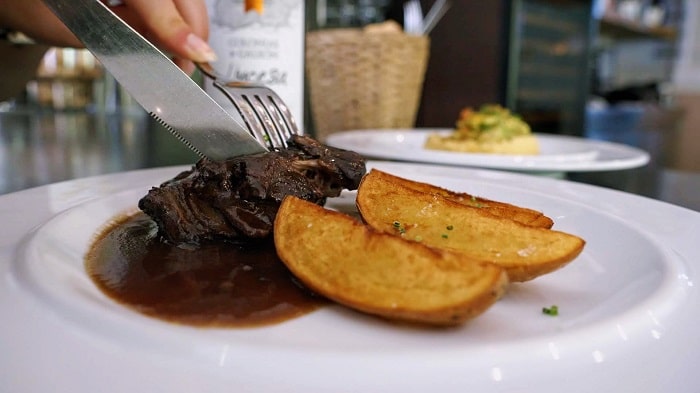
Iberian Carrillera with wine sauce tapa served on our Seville Food Tour
2. Papada (Jowl)
Italians call this cut guanciale, which is similar to bacon but fattier.
The Iberian pig jowls are located on the neck of the pig, under its face. It is a very tender and juicy piece, even more so than pork belly.
Like bacon, is made up of skin, meat, and layers of fat that infiltrate the muscle, creating a white marbling that provides it with an exceptional texture and flavor.
The weight of a piece of papada can vary between approximately 1 and 1.5 kilograms and it’s great for grilling on barbecues.
3. Cabecero (Shoulder Collar)
This lean cut comes from the lower neck, and it divides the loin from the over-shoulder or presa. Usually with a lovely marbling but never overly fatty, the cabecero shares similarities with the lean loin and you can easily substitute them in a recipe. However, the shoulder collar is a bit fattier.
When fresh, it’s not unusual for cooks to grind the cabecero for a premium quality ground meat, but the cut is also salted and dry-cured for an authentic treat. Although Iberico loin is considered amongst the noblest dry-cured meats in the Spanish repertoire, connoisseurs might prefer the shoulder collar for its fattier and more unctuous taste.
4. Presa (Over-Shoulder)
The presa and the pluma are two different cuts of meat, but they’re similar in size. The presa is sometimes known as the pork’s caviar for its exclusivity — it’s hidden between the cabecero or shoulder collar and the shoulder itself. The thick-cut is insanely juicy, and it’s best enjoyed when grilled at high heat.
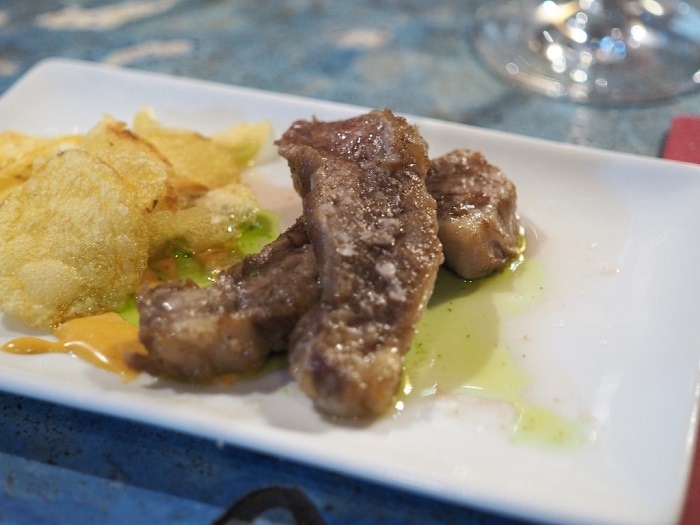
Presa Ibérica served on our Malaga Tapas Tour
5. Paleta (Shoulder)
This one, you surely know. The paleta ibérica is amongst the country’s acclaimed dry-cured specialties, and it’s on the same level as the famous jamón. But, of course, the animal’s front legs are shorter than the back legs, so the paleta is smaller than the jamón — it’s just as tasty, though!
Recognized as one of the tastiest dry-cured hams in the world; the Iberico paleta has a lovely fat cap and an excellent marbling that becomes the most gorgeous strips of crimson-hued ham. The paleta is also often less expensive than jamón, so it’s a great buy!
6. Lagarto (Rib-Loin Strip)
Lagarto means lizard or alligator, but this is no exotic meat, but a thin, elongated strip of lean meat found between the pork’s ribs and the loin — basically between the spine and the back.
This lovely strip of meat is ideal for stir-fries and sautéed dishes, as it cooks fast and always results in tender, juicy meat; it’s a grilling favorite, too! And if coming from an acorn-fed Iberian pork, the reptilian-named pork cut is heavenly. Marinate lagarto for the best results and be prepared for a meaty treat! This lesser-known cut is a favorite amongst those in the know.
7. Pluma (Lower Loin)
The pluma lies in front of the loin, just above the shoulder blade. Its name means feather, and it’s because these cuts (there are two in each animal) are long and thin, just like feathers.
Just sprinkle this cut with salt and cook it briefly on the grill. Or use it to prepare our mouth-watering Boletus, Foie and Secreto Ibérico Paella
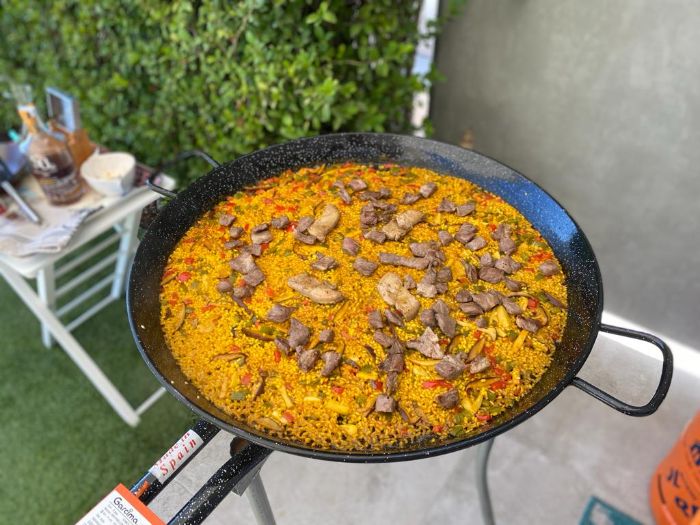
8. Abanico (Rib cover)
It is the layer of meat that covers the ribs on the outside and is a thin piece in the shape of a trapezoid – so that when you take it with your hand it can look like a fan – with a lot of streaks of fat.
It is cooked in steaks on the grill so that it is crispy on the outside and juicy on the inside. It can be served in different ways; steaks, strips, or dices.
9. Secreto (Behind the Shoulder)
Legend says butchers keep this ‘secret’ cut of meat for themselves for its immense quality, tenderness and marbling ratio. This secret cut is literally hidden between the shoulder and the pork belly and can be easily overlooked.
Thin and tender, you should always cook the secreto as-is on the grill for the briefest of moments. The tender strip behind the shoulder blade is a secret no more — people love it, and you should too! Sometimes referred to as a pork skirt steak, there’s really no comparison for such thin and delectable Iberico cut. The bad news? There’s never enough for everyone!
10. Solomillo ( Tenderloin)
Along with the famous cured hams, the jamón, and the paleta, the third best-known cut of Iberico pork is the solomillo or tenderloin. This muscle does little work, so it’s the leanest cut in the carcass; it’s also one of the most tender.
Beautifully juicy, you can cook fresh solomillo in the oven, grill it whole or with a sauce. More often than not, though, the piece is salted and dry-cured artisanally for thin strips of Iberico goodness. If you love cured meat, chances are you already tried this delicacy — well, now you know the fresh loin is also quite a feast!
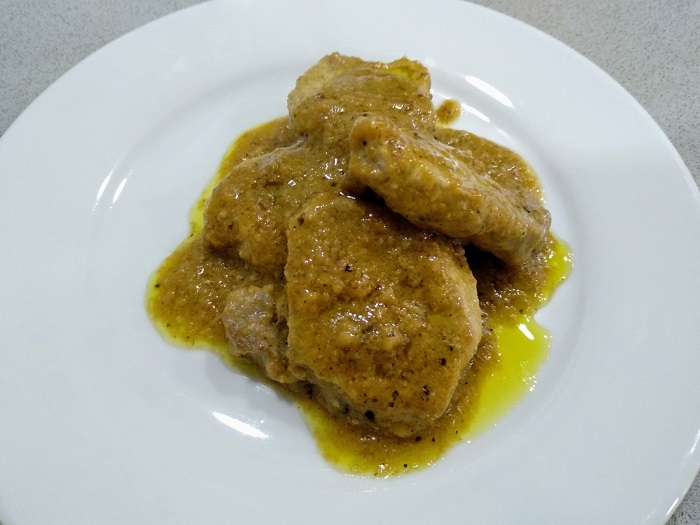
Iberian Pork Tenderloin in Almond Sauce
11. Costillas (Ribs)
This is a much more familiar cut, but these are not ordinary ribs. Iberico’s dark, meaty flesh can make you think you’re about to grill small beef chops, but this is 100% pork and of the highest quality.
The marbling in Iberico ribs is beyond compare, and their fat cap renders beautifully over a blistering grill. Keep in mind Iberico ribs are smaller than the regular kind you find in the supermarket — these pigs are raised for their flavor, not necessarily for their size! Having said that, expect nothing but the juiciest and most flavorful pork ribs you’ve had.
12. Panceta/Tocino (Bacon)
The tocino covers the entire animal as an insulating fat layer, so it can show up in a wide variety of pork cuts like panceta and papada. Still, when a Spanish butcher talks about tocino, he usually means the fat that covers the lower part, that is, the animal’s belly, which is a massively thick piece of white, pure fat called panceta.
As you know, fat is all about flavor, so it’s not uncommon to see cooks add this fatty cut to stews or ‘cocidos’ and broths. With a thickness between 1.5 and 4 inches, this is one good piece of pork fat. When the pig is fed in the open in Spain’s verdant acorn fields, the fat is as flavorful as it comes.
13. Lomo (Loin)
The loin runs along the spine. The most significant difference between a pork loin and a tenderloin is their size. They’re both lean and lack connective tissues, so they’re fork-tender soft. You’ll recognize the pork loin from the tenderloin for loin’s pearly fat cap, not found in the tenderloin.
In other words, the loin is the roast or center rib roast; it’s basically where the meat for ribs comes from.
When it is used fresh, it is known by the name of cinta de lomo. The loin is best enjoyed when slow-roasted, as it gains a juicy personality. And, of course, in Spain, they’ll salt and dry-cure it as well, especially when it comes from acorn-fed animals to obtain the famous caña de lomo, a product that for many is at the same level as Iberian ham.
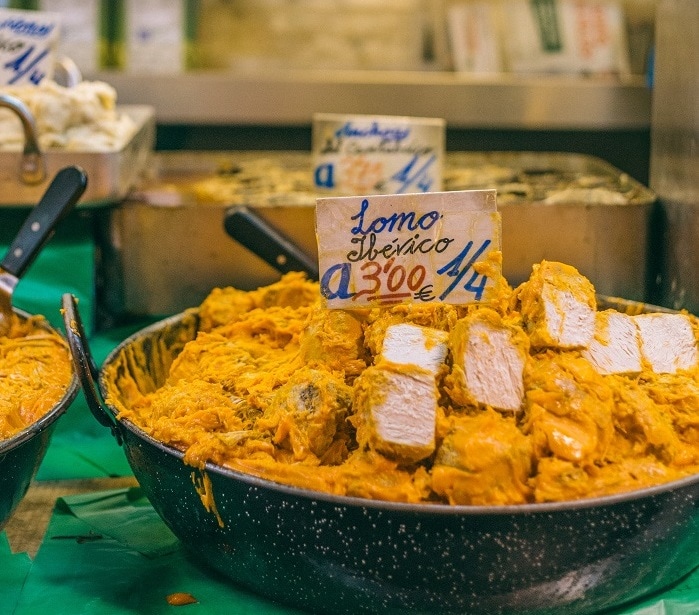
Iberian pig loin with lard -Atarazanas Food Market (Malaga, Spain)
14. Jamón (Hinder Leg)
Last but not least, the most famous cut in an Iberian pig is its back legs — the source for the most wonderfully marbled dry-cured ham in the world. There’s nothing like artisanally cut, thin strips of Iberico ham, and although a leg weighs at least 12 pounds, a hungry crowd can devour it in an evening.
Remember, jamón only comes from the pig’s back legs. The front legs, or paletas, although equally delightful, are an entirely different cut. If you choose only one Iberico cut, jamón is a safe bet — it’s a great ambassador for what the noble breed is all about, lots of flavors!
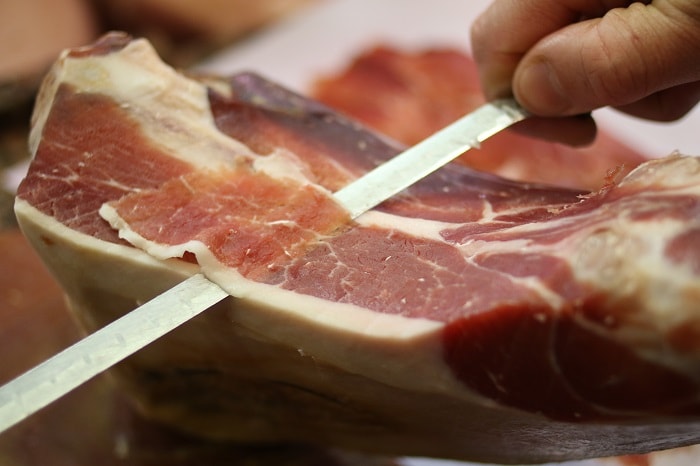
Don’t forget to share this post!
Related Articles
↓
Sign up for our Newsletter and get the inside scoop on our favorite recipes,
exploring and devouring Spain and more.
